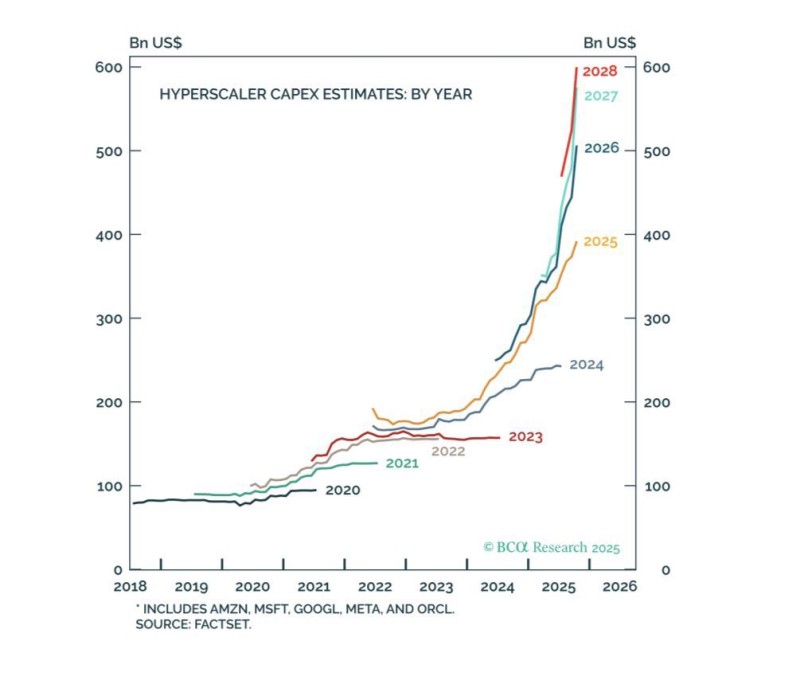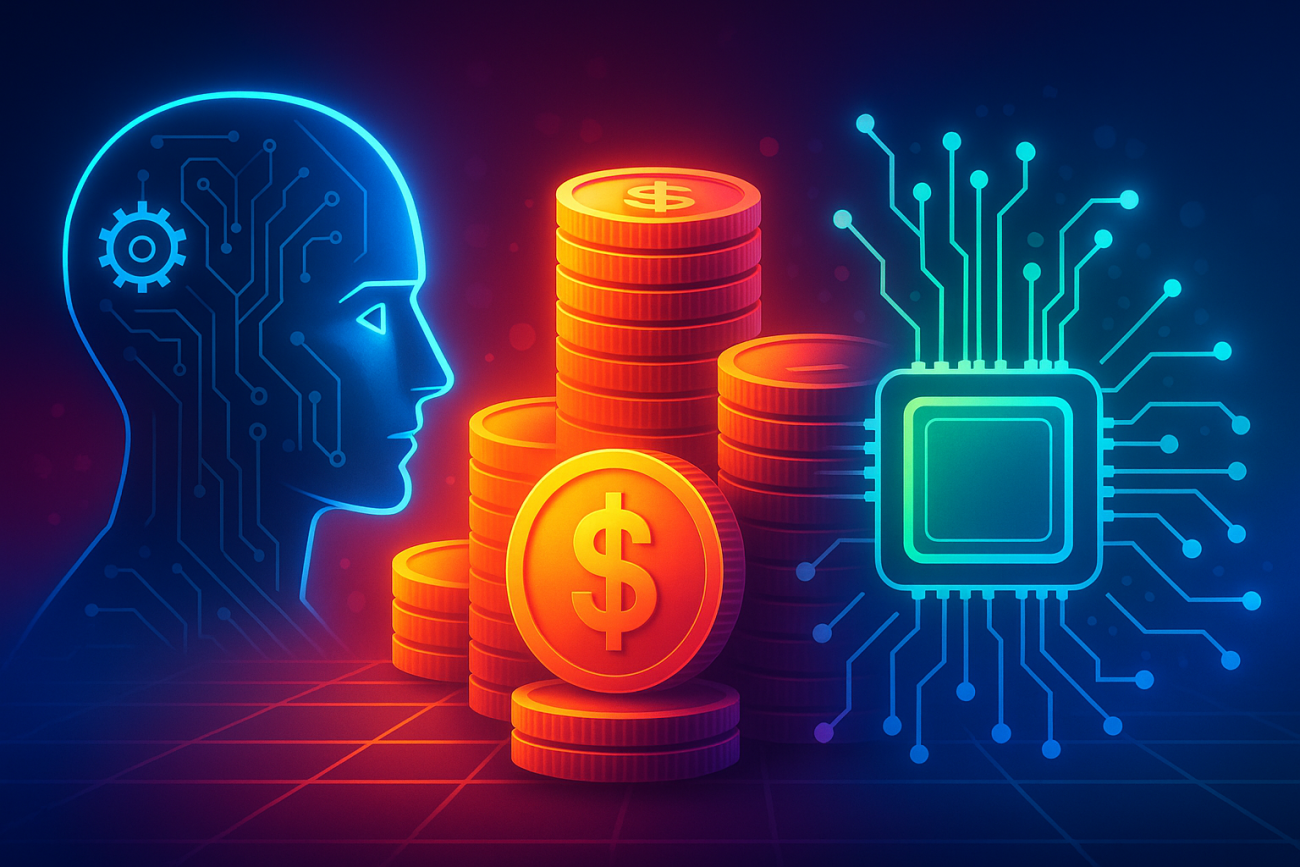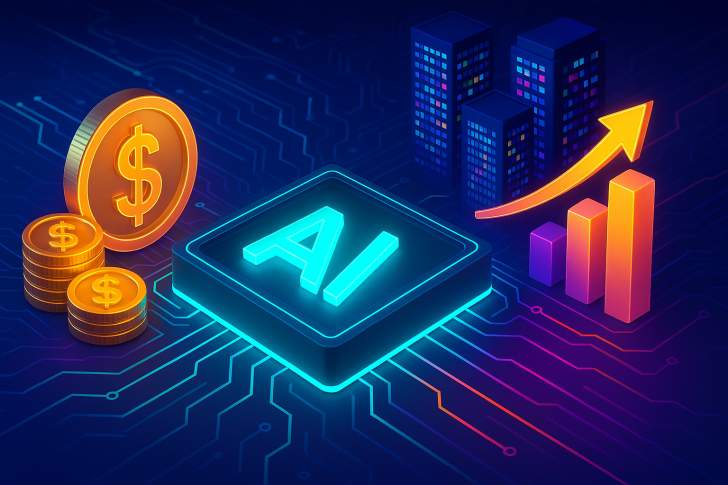⬤ Big cloud providers are staring down a financial crunch as their AI spending spikes. Fresh numbers suggest hyperscalers will be sitting on about $2.5 trillion in AI assets by 2030. With a 10% cost of capital and 20% yearly depreciation eating into those assets, they'll need at least a 30% return just to break even. Meanwhile, capital expenditure keeps climbing through 2025 and 2026, extending a sharp upward trend that started back in early 2023.

⬤ The spending forecasts for 2026, 2027, and 2028 show no signs of slowing down—each year's projection keeps getting revised higher. This lines up with the massive rollout of AI data centers, GPU farms, and distributed computing networks happening across the industry. Here's the math: a 30% ROI on $2.5 trillion means these companies need to pull in roughly $750 billion in extra operating profit by 2030. Right now they're making around $450 billion combined, which means profits would have to nearly triple in five to six years.
⬤ That kind of earnings jump would take some serious breakthroughs—whether through better AI monetization, wider enterprise adoption, fatter software margins, or major cost cuts. None of that's a sure thing given where the market stands today. The charts show each forecast year getting pushed higher, reflecting just how big this global AI infrastructure build-out has become. But bigger investments also mean bigger risks if the revenue doesn't show up to match.

⬤ The growing disconnect between what's being spent and what needs to be earned highlights the central gamble of this AI boom: massive infrastructure bills today have to turn into massive profits tomorrow. Whether hyperscalers can hit those profit targets will shape the economics of the entire AI sector, drive hardware demand, and determine how long this investment cycle can actually last.
 Peter Smith
Peter Smith

 Peter Smith
Peter Smith


